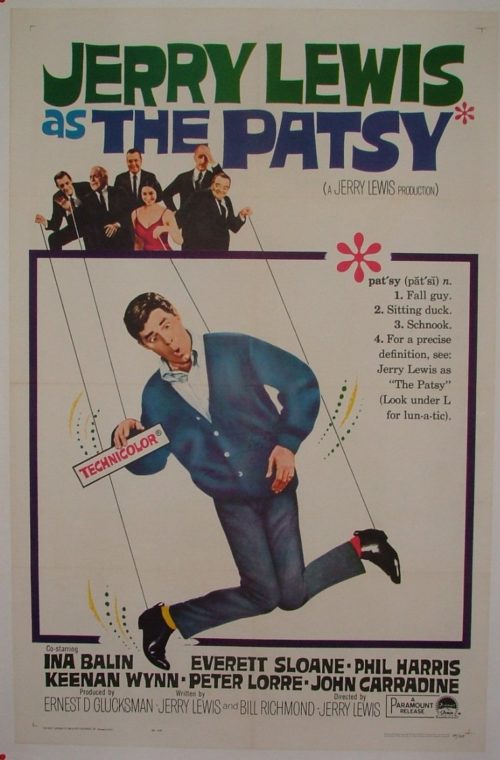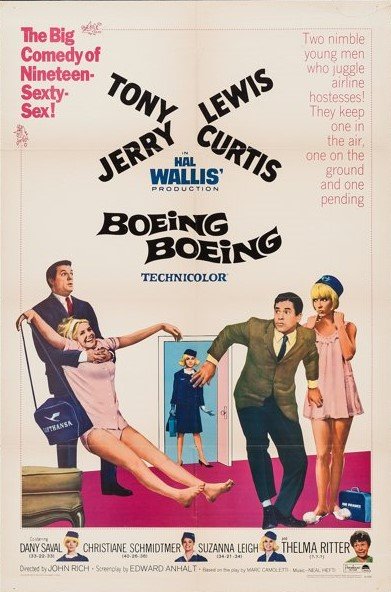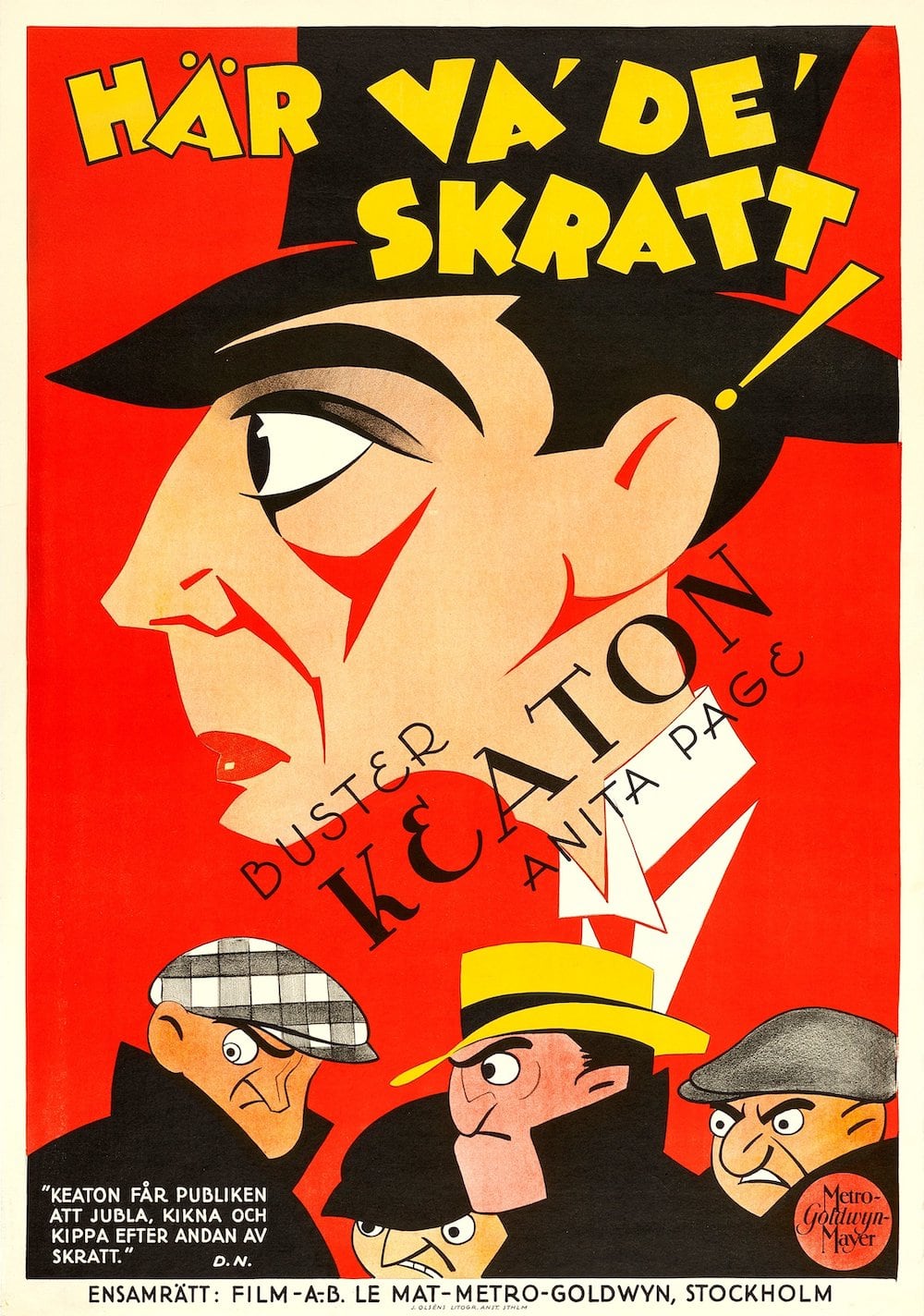Jerry Lewis
The film career of Jerry Lewis spanned more than sixty years, from new comedy kid on the block, to elder industry statesman. He started out with Dean Martin, and after the team split his solo career continued; with Jerry writing, directing, producing and starring in many of his own vehicles. Unlike Chaplin, he never managed also to compose his own scores.
1970s’ students and 1980s’ film fans found it hilarious when Steve Martin played dysfunctional and shouted a lot. A decade later, Jim Carrey’s gurning and rubber limbs topped the box office, and Lee Evans had some film success.
But most people still look disbelieving if you suggest that Jerry Lewis is, or ever was, even mildly funny. Or they will say, knowingly, “The French think he’s funny” as proof positive that he isn’t. In fact, for fifteen years he was massive at the box office, and often hailed as a new Chaplin.
The accidental teaming of the youthful, manic comedian, with the older, calming influence of crooner Dean Martin was an immediate and overwhelming success. Their appearance in 1949’s “My Friend Irma” signalled the arrival of an exciting new comedy duo. They made Laurel and Hardy look ponderous, and made Abbott and Costello’s wordplay look staged and belonging to a bygone era.
Jerry was a whirlwind of comic energy, and the steadying – but still funny in his own laid back style – Dino was the perfect complement. Together, they could do no wrong. A series of colourful, lively comedies – with songs thrown in – took them quickly to the top of the box office, eclipsing every other contemporary film comedian.
After 1956’s “Hollywood or Bust” the team split up acrimoniously, and they didn’t speak to each other for another twenty years. Martin pursued his own highly successful career, as a recording artist, tv and cabaret performer, member of Sinatra’s Rat Pack, and as a (sometimes straight and very powerful) actor.
Jerry’s ego got what it wanted. A dozen years of Jerry Lewis productions, starring and often also written and directed by Jerry Lewis. He hit his solo stride in the late 1950s and peaked in the early 1960s. The highpoint was his take on Jekyll and Hyde in 1963’s “The Nutty Professor”.
After that, his US popularity waned, especially as he took greater control over all aspects of his films. Like Harry Langdon 40 years earlier, he needed a strong director to harness and direct his undoubted talents. But for Jerry, who could know better what was funny than Jerry? And what was funnier than Jerry Lewis? (His only answer to the latter being: “Seven Jerry Lewises”. Hence his multiple roles in 1965’s “The Family Jewels”).
After 1970’s unfunny Nazi comedy, “Ja, Ja, Mein General” and its successor, the unreleased concentration camp movie, “The Day the Clown Cried”, it became much harder for him to obtain US financing for his projects. So apart from the occasional foreign financed outing, and his regular Telethon charity, that seemed to be that.
But Jerry was nothing if not resilient. Ten years later he was back in American films, combining starring roles in his own vehicles, with supporting roles in other people’s. The highspot of his later career (closely followed by 1995’s “Funny Bones” and Kusturica’s “Arizona Dream” in 1992) was the Scorsese/De Niro study of celebrity and obsession. Robert De Niro was the star of 1982’s “The King of Comedy”, but the film belonged indisputably to Lewis, as comedian chat show host and celebrity kidnap victim, Jerry Langford. And Jerry was making movies almost right up to the end (he passed away in 2017 at 91) – though unfortunately we are still awaiting a proper release for his last starring role, in 2013’s “Max Rose”.
Some of our current Jerry Lewis stock
-

The Nutty Professor
£145.00In stock
Format: Lobby CardView -

The Nutty Professor
£115.00In stock
Format: Lobby CardView -

The Patsy
£495.00In stock
Format: One SheetView -

The Disorderly Orderly
£450.00In stock
Format: One SheetView -

Boeing Boeing
£500.00In stock
Format: One SheetView











